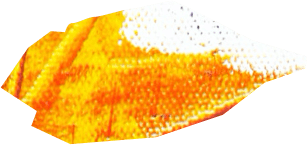1. Introduction
Bronze animal sculptures have captivated audiences with their timeless charm and artistic value. These sculptures not only reflect the beauty of nature but also embody the skill and craftsmanship of the artists. Many people may not be able to distinguish between Panthers and Leopards, or Jaguars. In this article, we will explore the aesthetic distinctions among five iconic bronze animal sculptures: Panther, Puma & Cougar, Cheetah, Leopard, and Jaguar.
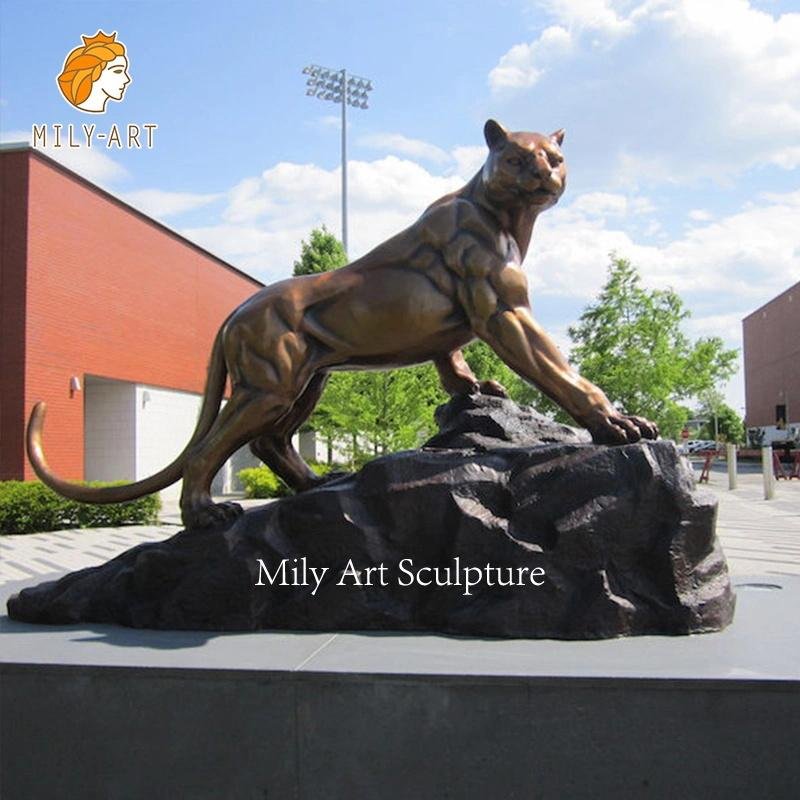
2. Material and Craftsmanship of Bronze Animal Sculptures
2.1 Advantages of Bronze
Bronze is renowned for its durability and aesthetic appeal. It is strong, resistant to weathering, and can be crafted into intricate details, making it an ideal material for outdoor and indoor sculptures. The rich, warm texture of bronze adds a natural and textured appearance to the sculptures, which becomes more vibrant with time.
| Material | Advantages | Disadvantages | Typical Applications |
|---|---|---|---|
| Marble | – Elegant natural texture and appearance – Durable and strong – Retains fine details well (especially Carrara marble) – Timeless classical appeal | – Heavy and difficult to move – Can be stained or weathered by acids – Carving is time-consuming and costly | Indoor and outdoor large-scale sculptures, monuments, classical fine art |
| Resin | – Lightweight and easy to handle – Can mimic various materials (metal, stone, glass) – Cost-effective – Captures high detail – Flexible in design and color | – Less durable, prone to fading and UV damage – Not ideal for long-term outdoor use without special treatment – Lower perceived value compared to bronze or marble | Indoor decorative pieces, limited-edition art, budget-friendly sculptures |
| Bronze | – Extremely durable and weather-resistant – Excellent for fine, intricate details – Develops attractive natural patina over time – Recyclable and sustainable – Suitable for indoor and outdoor use | – Higher material and production costs – Complex, labor-intensive casting and finishing process – Heavier than resin but lighter than marble | High-end indoor/outdoor sculptures, public art, collectible fine art |
2.2 Overview of the Casting Process
The lost-wax casting technique is commonly used in the creation of bronze sculptures. This process involves creating a wax model, encasing it in a refractory material, and then melting out the wax to make a mold. Molten bronze is then poured into the mold, and after cooling, the sculpture is removed and refined through hand-polishing. Finally, the casting bronze sculpture is heated, and chemicals are sprayed on the surface to create the “patina”, a colored finish.
3. Aesthetic Distinctions Among Animal Sculptures
3.1 Jaguar Sculptures
- Physical Characteristics: Jaguar sculptures often depict the animal’s robust build and distinctive spots.
- Style and Design: These sculptures can range from realistic to abstract, emphasizing the power and majesty of the jaguar.
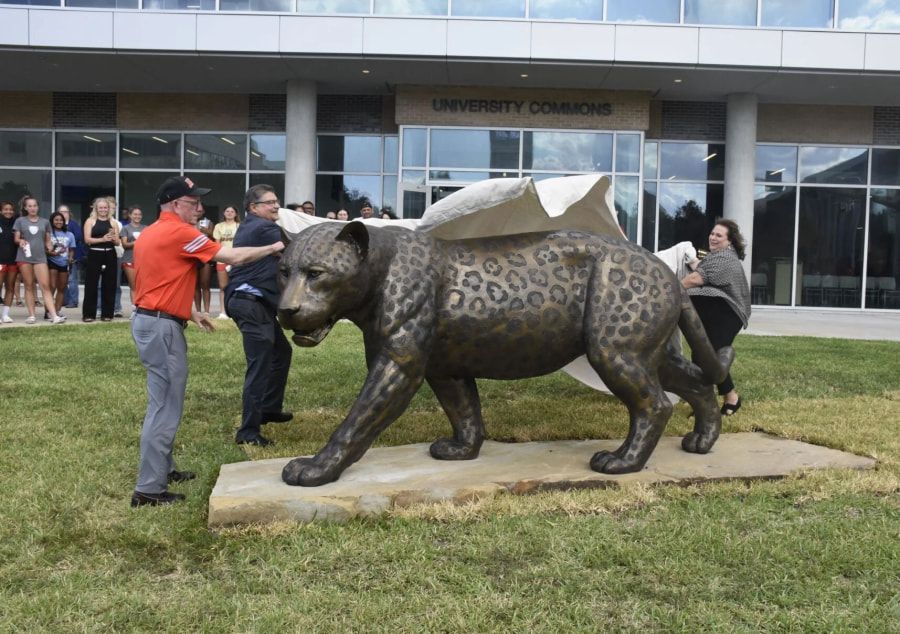
3.2 Panther Sculptures
- Physical Characteristics: Panthers are typically shown with sleek bodies and agile poses.
- Style and Design: The sculptures often highlight the panther’s stealth and agility, with designs that emphasize its mysterious nature.
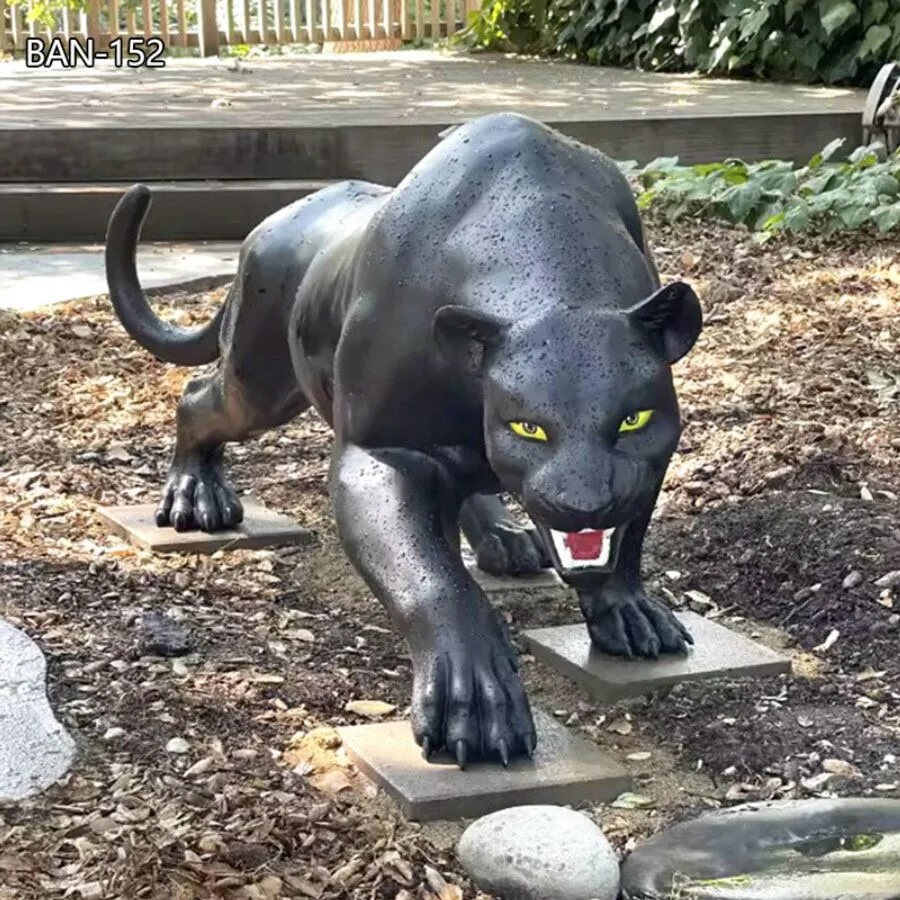
3.3 Puma Sculptures & Cougar Sculptures
Cougar is another common name for puma, and is similar to puma.
- Physical Characteristics: Puma sculptures feature the animal’s lithe body and sharp claws.
- Style and Design: These sculptures often capture the puma’s grace and agility, with designs that reflect its adaptability in various environments. Some people call them mountain lions.
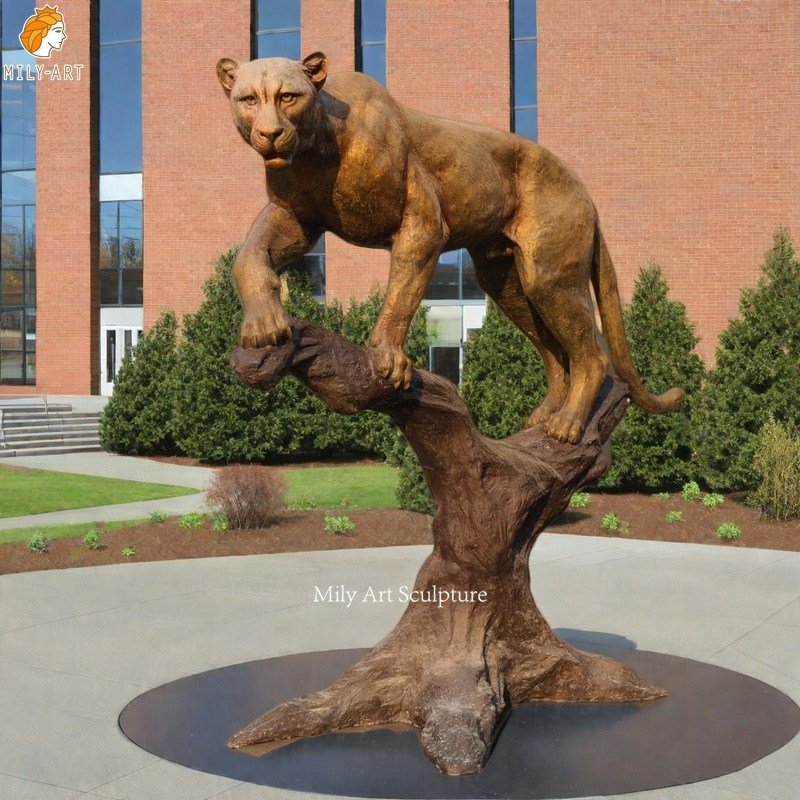
3.4 Cheetah Sculptures
- Physical Characteristics: Cheetah sculptures emphasize the animal’s speed and slender physique, often with elongated bodies and legs.
- Style and Design: Designs focus on capturing the cheetah’s incredible speed and agility, with dynamic poses that convey movement.

3.5 Leopard Sculptures
- Physical Characteristics: Leopard sculptures highlight the animal’s spotted coat and agile build.
- Style and Design: These sculptures often blend realism with artistic flair, emphasizing the leopard’s elegance and stealth.

4. Choosing the Right Bronze Animal Sculpture
When selecting a bronze animal sculpture, consider your personal preferences and the décor style of your space. Ensure that the sculpture’s size complements the available space, whether it’s for indoor or outdoor display. If you are not sure how to measure or choose the right designs, please feel free to contact our product specialist for any assistance.
5. Considerations for Purchasing Bronze Animal Sculptures
- Choose a Reputable Manufacturer or Supplier: Ensure that the supplier is known for quality and craftsmanship.
- Check Product Details and Quality Assurance: Verify the sculpture’s material, craftsmanship, and any guarantees provided.
- Understand Shipping and Maintenance Information: Know how the sculpture will be transported and any maintenance requirements to ensure longevity.
6. Conclusion
Each bronze animal sculpture offers unique aesthetic and symbolic value. Whether you’re drawn to the majesty of the jaguar, the agility of the puma, or the elegance of the leopard, there’s a bronze sculpture that can enhance your space with its timeless beauty.
7. Product Recommendations
Here are some recommended bronze animal sculptures, each with its own distinct charm:
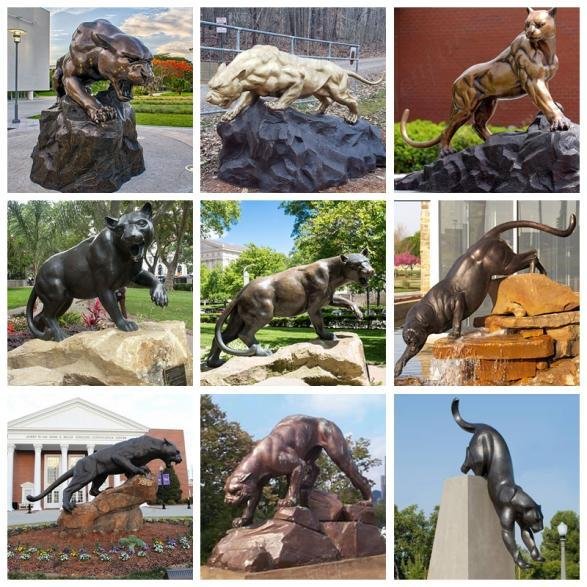
Milystatue is a professional bronze animal statues foundry with 40 Yrs Experience, has exported to the USA, Europe, and Australia thousands of animal statues since 2007. We have a Professional Designers Team, QC Team & Shipping Team to satisfy your custom demands. Please feel free to contact us if you need any help.


